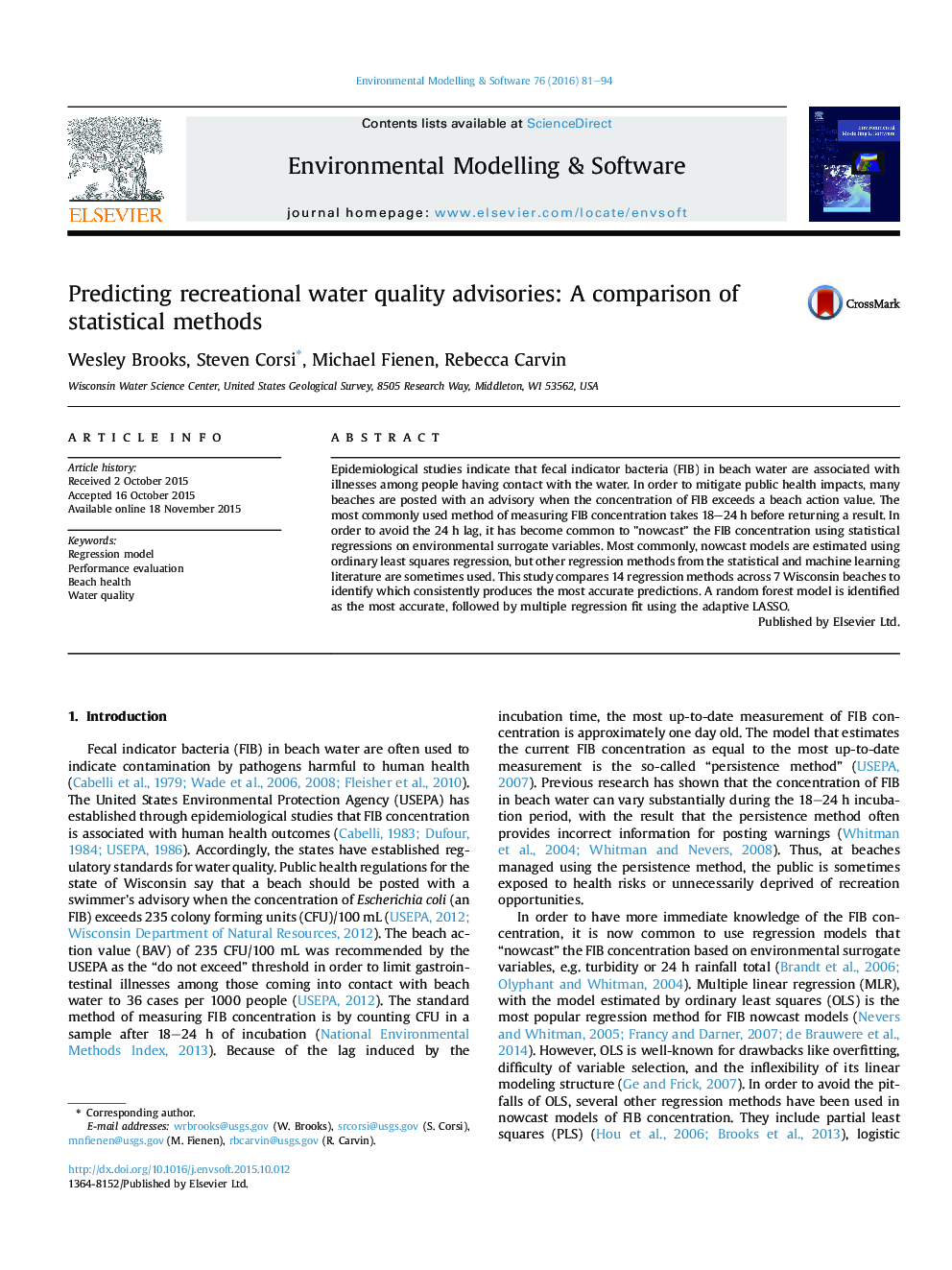| Article ID | Journal | Published Year | Pages | File Type |
|---|---|---|---|---|
| 6962636 | Environmental Modelling & Software | 2016 | 14 Pages |
Abstract
Epidemiological studies indicate that fecal indicator bacteria (FIB) in beach water are associated with illnesses among people having contact with the water. In order to mitigate public health impacts, many beaches are posted with an advisory when the concentration of FIB exceeds a beach action value. The most commonly used method of measuring FIB concentration takes 18-24 h before returning a result. In order to avoid the 24Â h lag, it has become common to ”nowcast” the FIB concentration using statistical regressions on environmental surrogate variables. Most commonly, nowcast models are estimated using ordinary least squares regression, but other regression methods from the statistical and machine learning literature are sometimes used. This study compares 14 regression methods across 7 Wisconsin beaches to identify which consistently produces the most accurate predictions. A random forest model is identified as the most accurate, followed by multiple regression fit using the adaptive LASSO.
Related Topics
Physical Sciences and Engineering
Computer Science
Software
Authors
Wesley Brooks, Steven Corsi, Michael Fienen, Rebecca Carvin,
